The unimproved chalk grasslands of the Chilterns are ideal for orchids. Late May to July are the best times to see them.
There are a number of reserves that are managed specifically for wildflowers and these are the best places to find orchids in numbers. Though orchids can be found on chalk grassland throughout the Chiltern Hills, their numbers, like most wildflower species, have declined dramatically due to modern intensive farming and widespread use of fertilizers and herbicides.
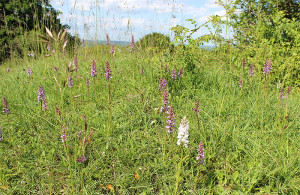
Traditional methods of land management, long in decline, such as spring or autumn grazing, and late summer hay making provide the ideal open conditions wildflowers need to flourish and set seed.
Despite this there are some amazing display of orchids still to be found and the Chilterns is one of the most renowned places in Southern England to find orchids.

Easiest to spot are the common orchids which vary in colour from light pink, almost white, to mauve and purple. The darker coloured common orchids are similar to the more evenly coloured purple fragrant orchids.
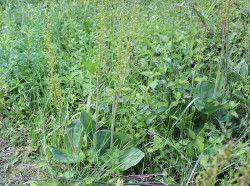
More subtle are the twayblade orchids that hide amongst the grasses. Once spotted though these are unforgettable with their twin large leaves and spike of green-hued flowers.

More dramatic are the butterfly orchids with their beautiful spikes of delicate white flowers.
Old, unimproved meadows, untended corners of fields and even roadside verges are great hunting grounds for orchids, though everything depends on the grazing and mowing regime in place.
Just as it wouldn’t be Spring without the bluebells, no Summer in the Chiltern Hills would be complete without a hunt for orchids. Midsummer’s day is the perfect time to get out and see how many species of orchid you can find in a day.
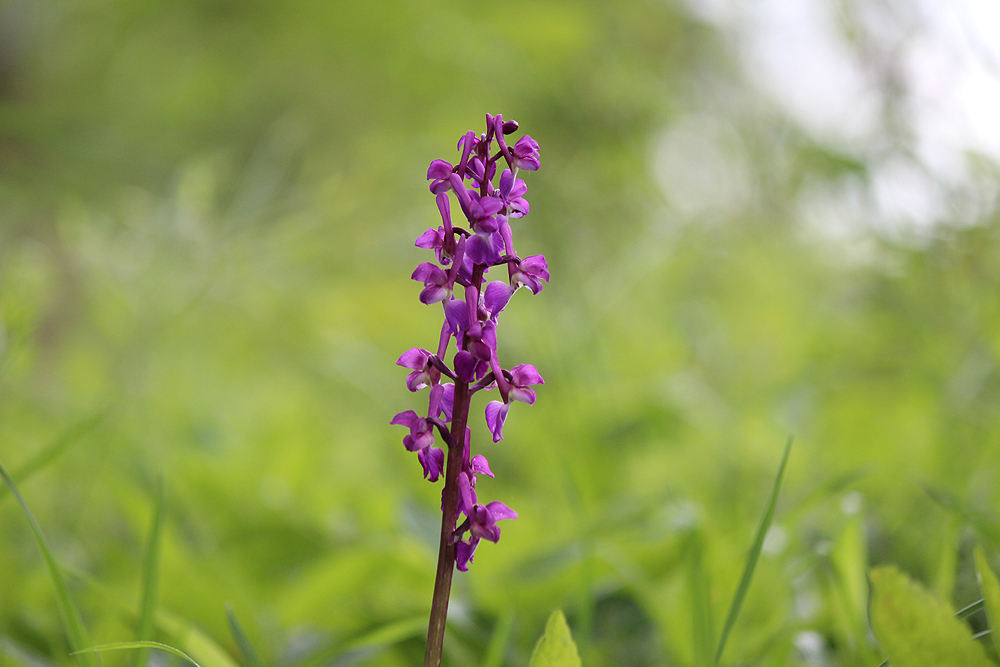
One of the first to flower, the early purple orchid is sadly no longer easy to find in the area. Look for it from mid-April.
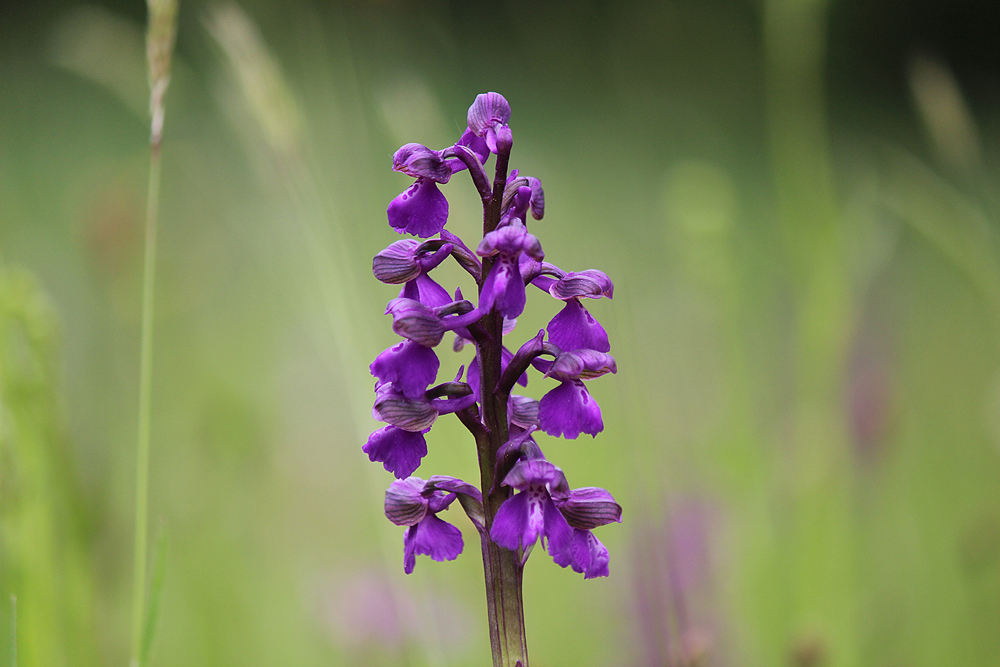
In decline due to its preference for damp meadows, the green winged orchid still flowers in abundance at Bernwood Meadows, an unimproved ridge and furrow pasture just north of Thame. Generally shades of purple, green winged orchids can also be found in pink and occasionally white.
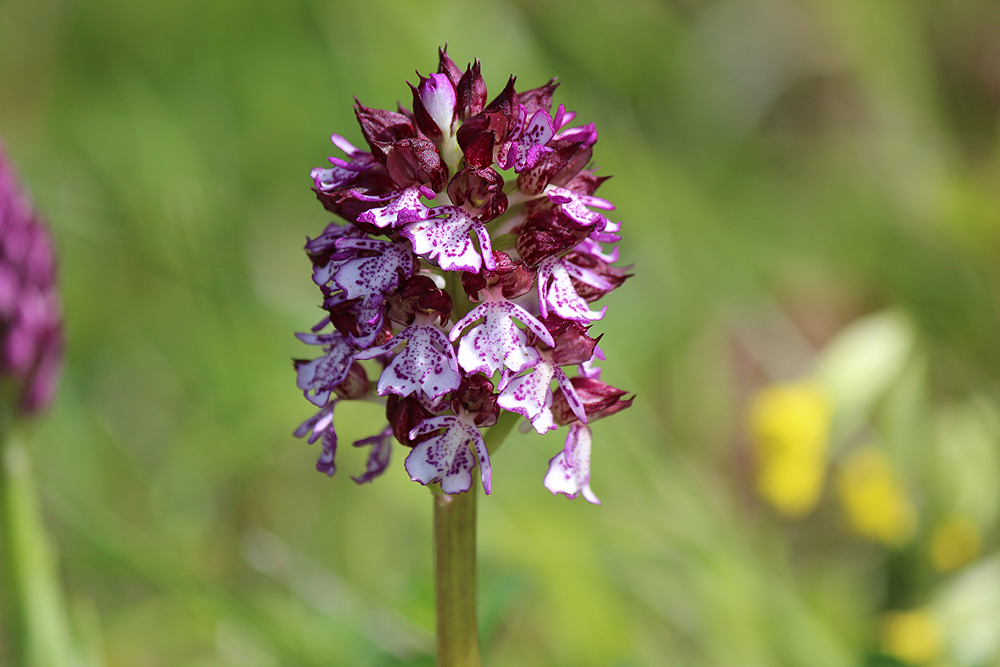
The lady orchid is nationally rare and only found in very small numbers, from mid-May to early June, in one location at the western extreme of the Chilterns.

The flowers of the lady orchid are said to resemble a lady in bonnet and dress. The flowers are quite a deep red and this orchid stands fairly tall.
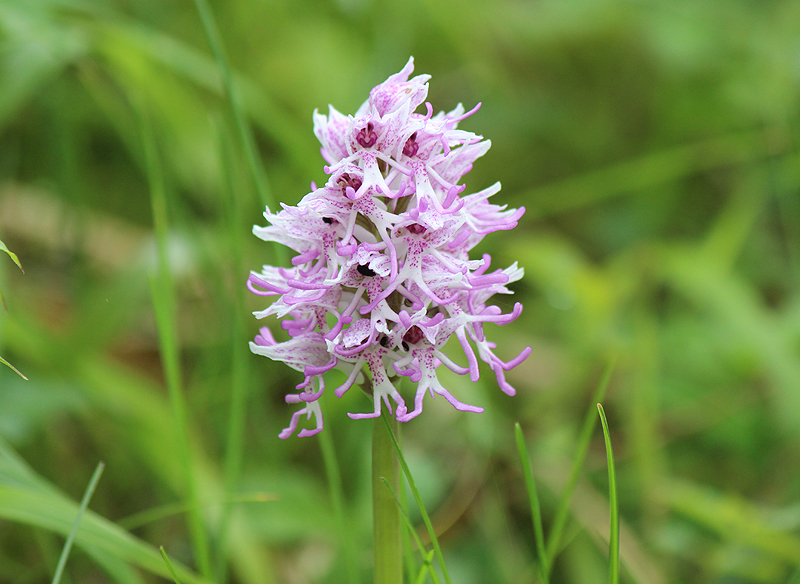
The monkey orchid is much smaller than the lady orchid, has much thinner arms and legs, and a pronounced thin tail. Locally very rare, it can be found in small numbers from mid May on the scarp slope of the western fringes of the Chilterns.
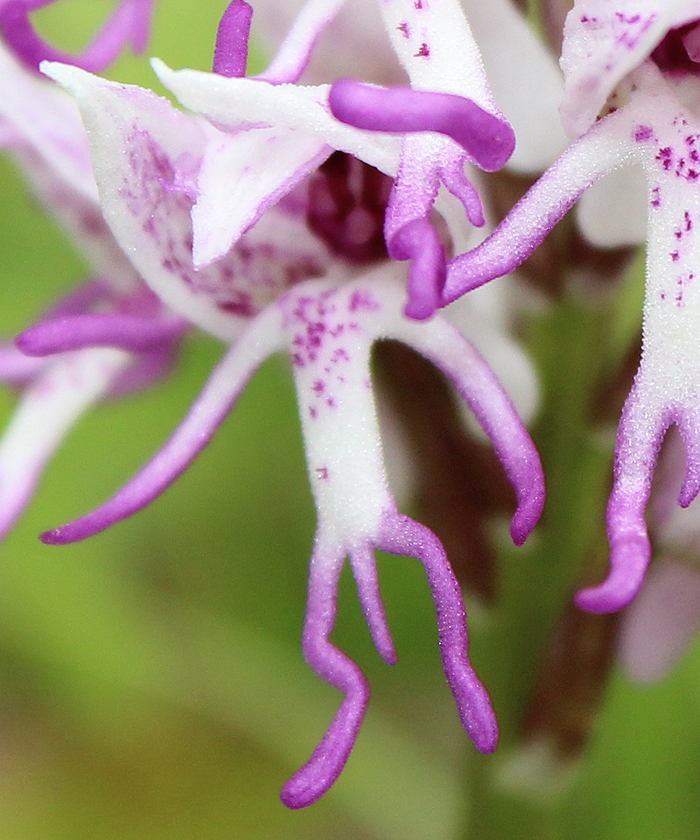
Monkey orchid flowers resemble miniature long-tailed monkeys.
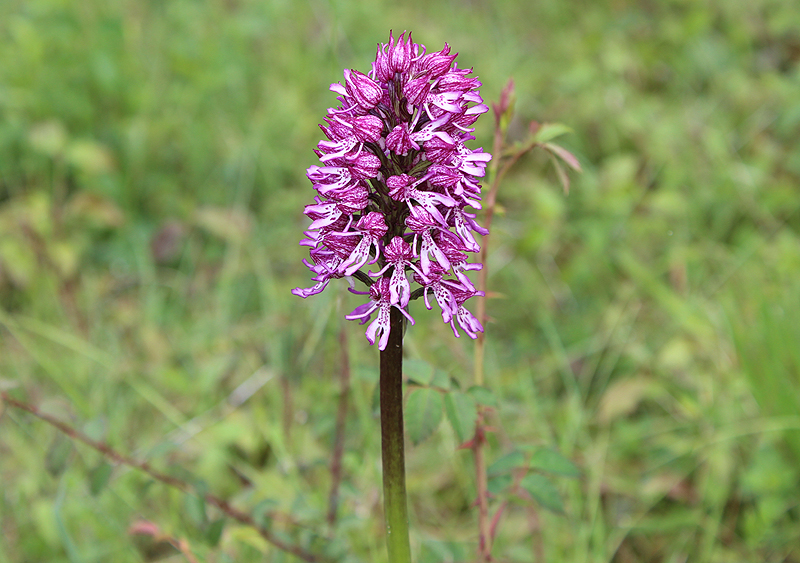
Recently the Lady Orchid has hybridised with the Monkey orchid to produce a Lady Monkey cross which is taller than the monkey orchid, more showy, generally a much darker pink, with thicker limbs and a smaller tail. This variant is found only in the Chilterns. Nationally endangered as listed on the IUCN Red List.
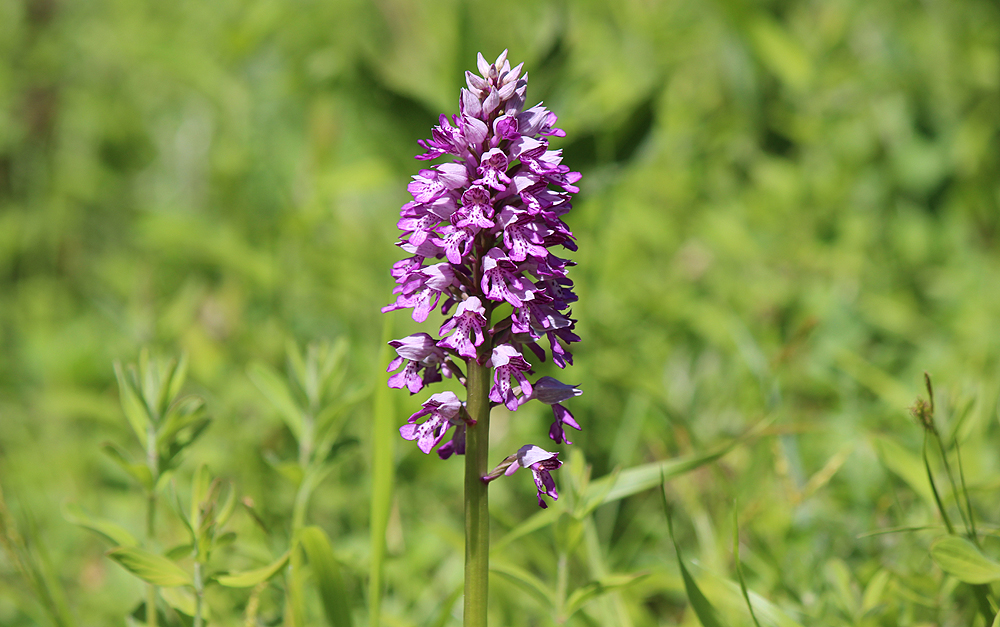
The military orchid can be found on only three sites in the Chilterns and one location in Suffolk. Military orchids flower from May to mid June.

The military orchid has a thicker stem compared to other orchids you see in the Chilterns and is generally somewhat taller. Its flowers resemble little soldiers with buttoned jackets and ornate helmets.

Although early marsh orchids need damp fen-like conditions, they do thrive in one location at the foot of the northern escarpment with the Chilterns as a magnificent backdrop.
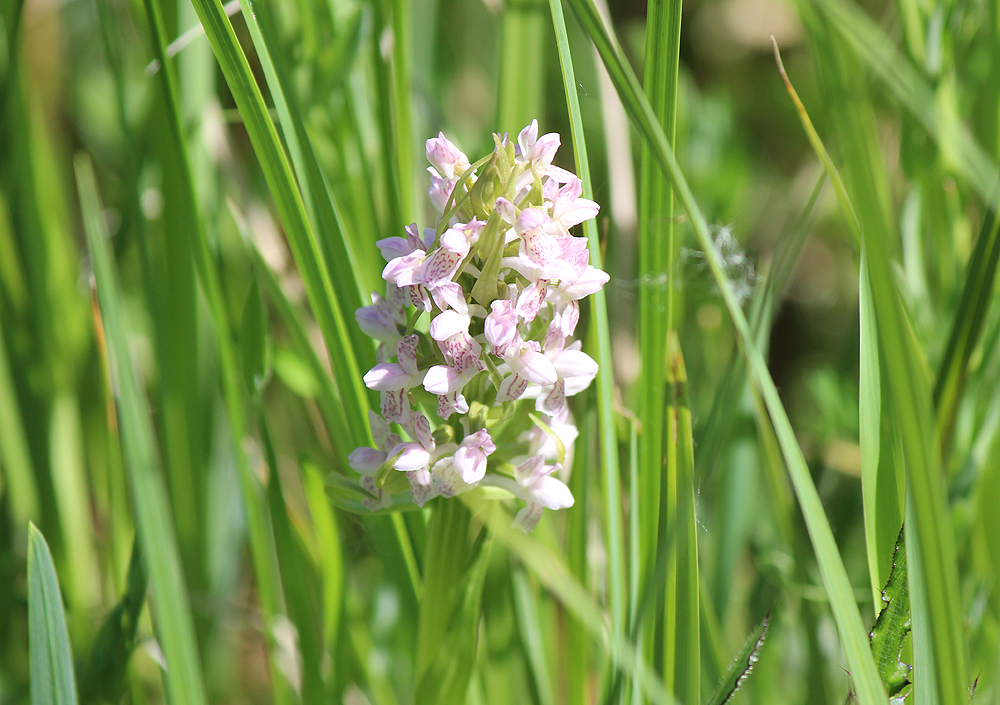
Look for the early marsh orchid amongst reeds from mid May.

The early marsh orchid flower is generally white with light pink markings whilst the stem is relatively thick and hollow, although, in common with all orchids, variations do occur.

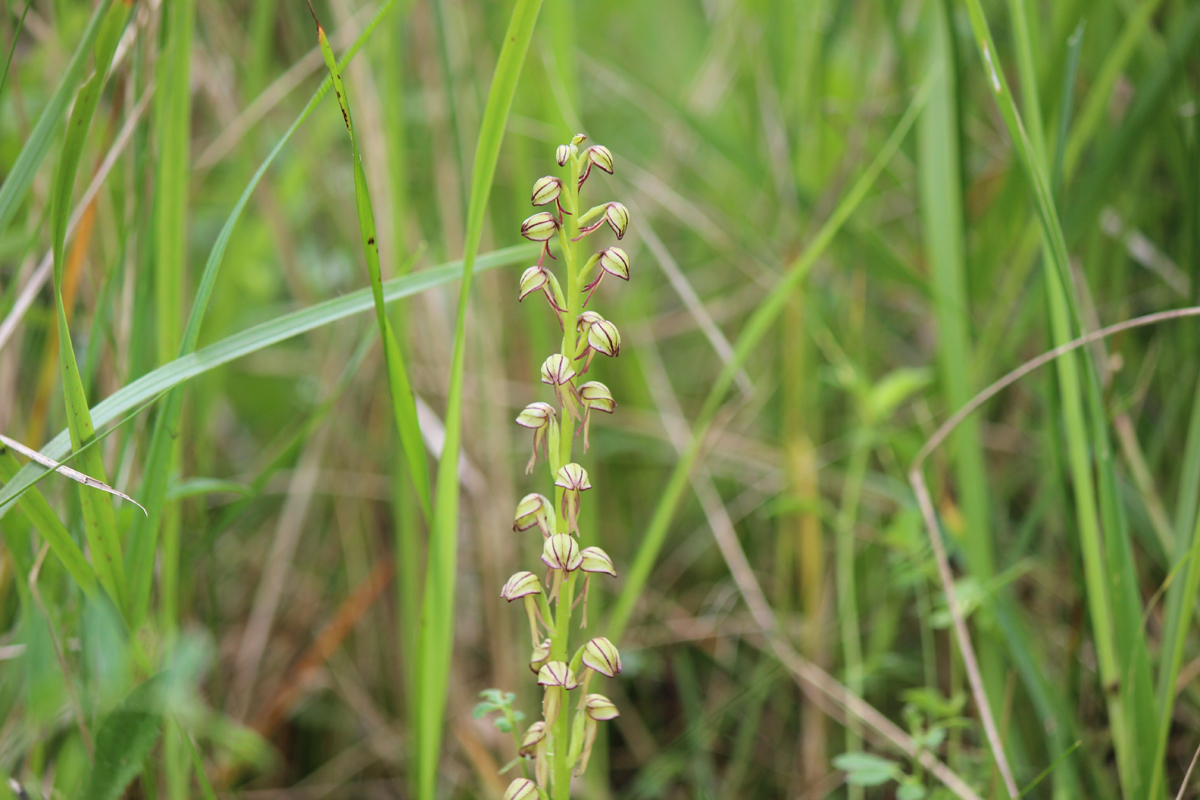
The man orchid looks somewhat similar to a twayblade at first glance. Locally and nationally rare, it can still be found, clinging on in worryingly small numbers, on one site north of the Bedfordshire escarpment. Listed as endangered on the IUCN Red List of threatened orchids of Great Britain (the only higher category is critically endangered, prior to extinction).

Each individual flower of the man orchid resembles a miniature stick man.

Nationally rare, the burnt tip orchid is found in the Chilterns only at one small hilltop location, very exposed and on very thin soils, on the north east boundary of the AONB. Flowering from late May to mid June, the burnt tip orchid, despite its diminutive stature, is reckoned to be one of the most beautiful.
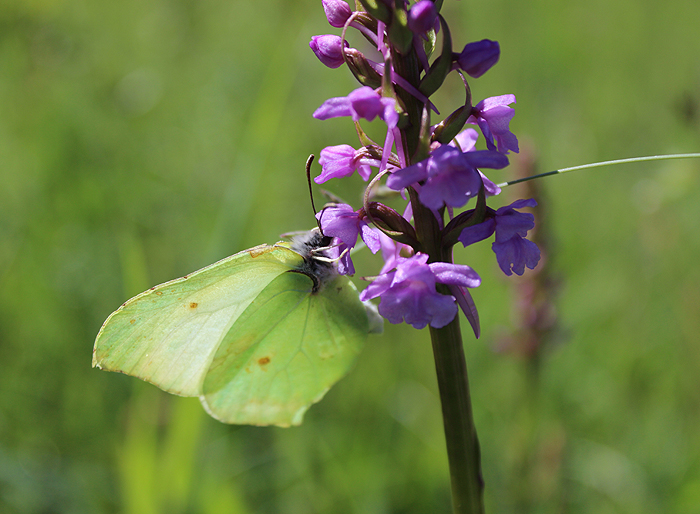
The chalk fragrant orchid, coming into flower at the end of May, has a rather slender form, and a uniform light purple flower. If in doubt, it can be distinguished by its fragrance.
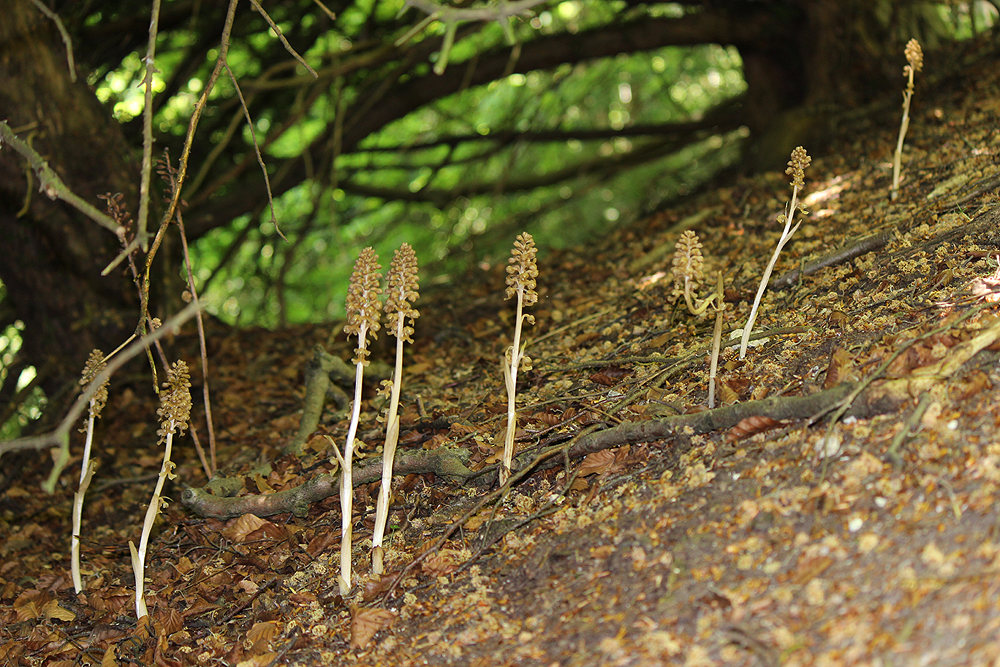
The birds nest orchid lacks green chlorophyll, instead relying on micorrhizal fungi to gain nutrients from the roots of beech trees.

In the Chilterns, the birds nest orchid is only found on a handful of sites, favouring the loose leaf litter under the dense canopies of mature beech trees.
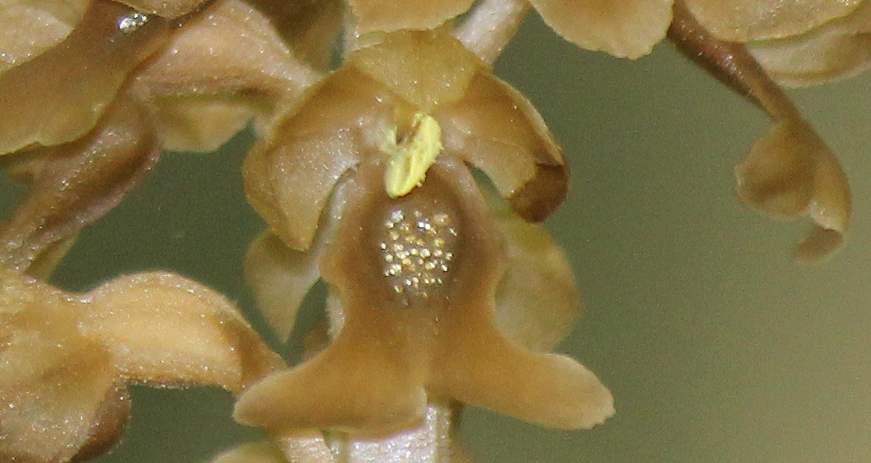
The root structure of this orchid apparently resembles a bird’s nest. The elusive birds nest orchid sends up its flower spike from around mid May.

It’s said that bee orchids never flower in the same place, but you can generally find them near where they were the previous year. Usually found in small groups amongst grasses, from June till July, they are easy to overlook being smaller than the common spotted orchids, though no less beautiful.
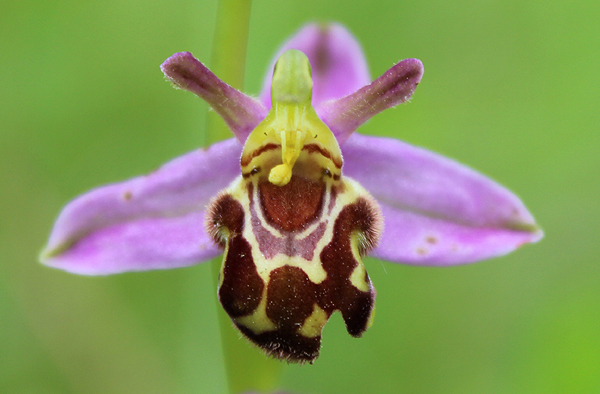
The bee orchid mimics the form of the female bumble bee. The male bee, going from flower to flower, carries out the task of pollination.

The incredible fly orchid employs a similar deception to the bee orchid, mimicking the digger wasp in order to achieve pollination. Hard to spot, look out for the dark flowers on a slender plant against the lighter coloured grasses on the edge of woodland.
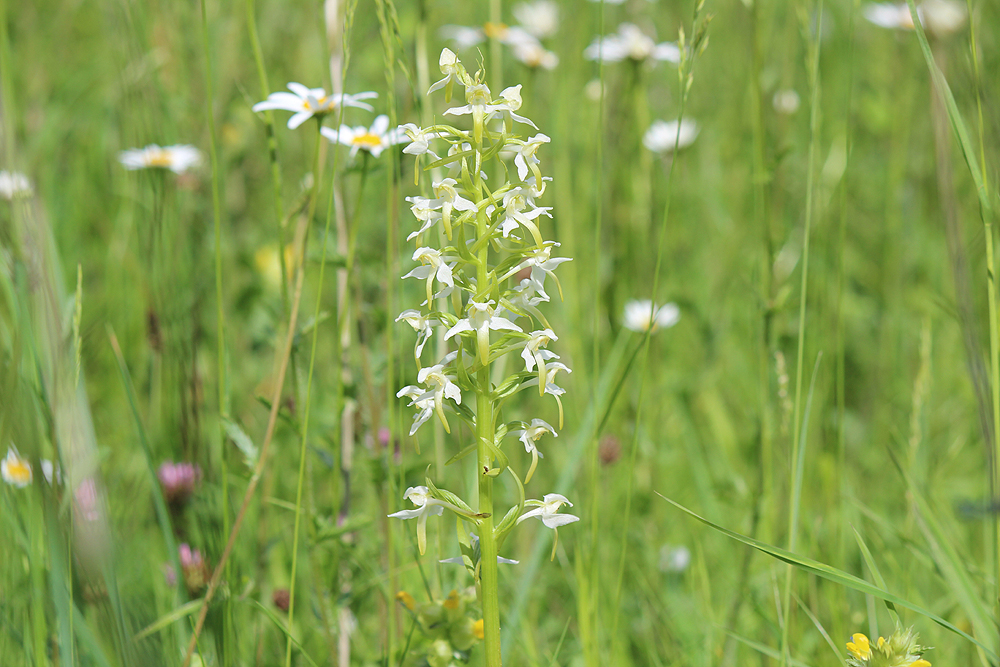
Greater butterfly orchids favour unimproved meadows, usually in full sun, though sometimes on the edge of scrub in partial shade. Usually coming into flower in early June in the Chilterns, its white colour stands out at night, thereby increasing its chances of being pollinated by visiting moths.
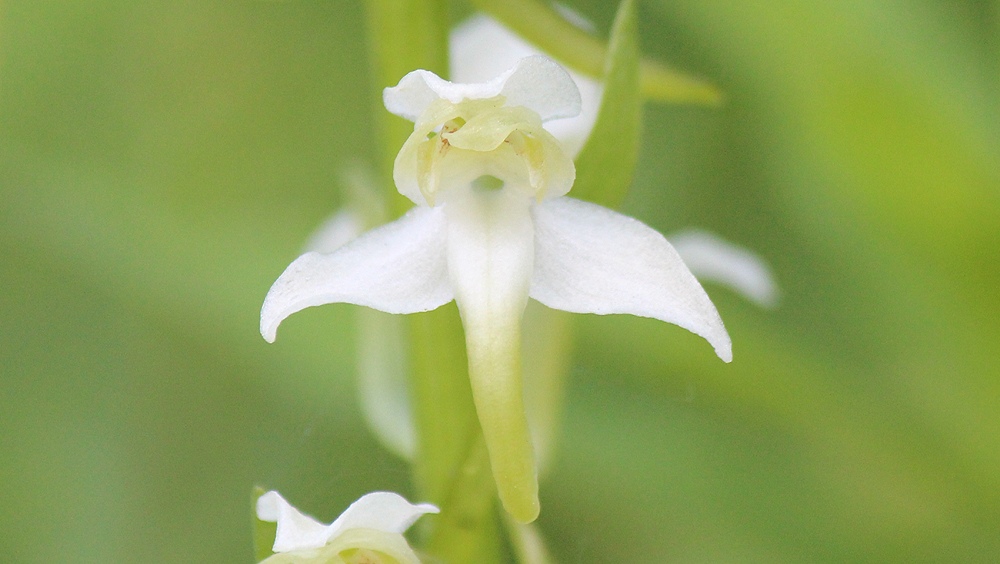
The pollinia of the greater butterfly orchid, as above, are comparatively widely spaced and joined at the top; those of the lesser butterfly orchid are more closely spaced, run parallel, and do not meet at the top.
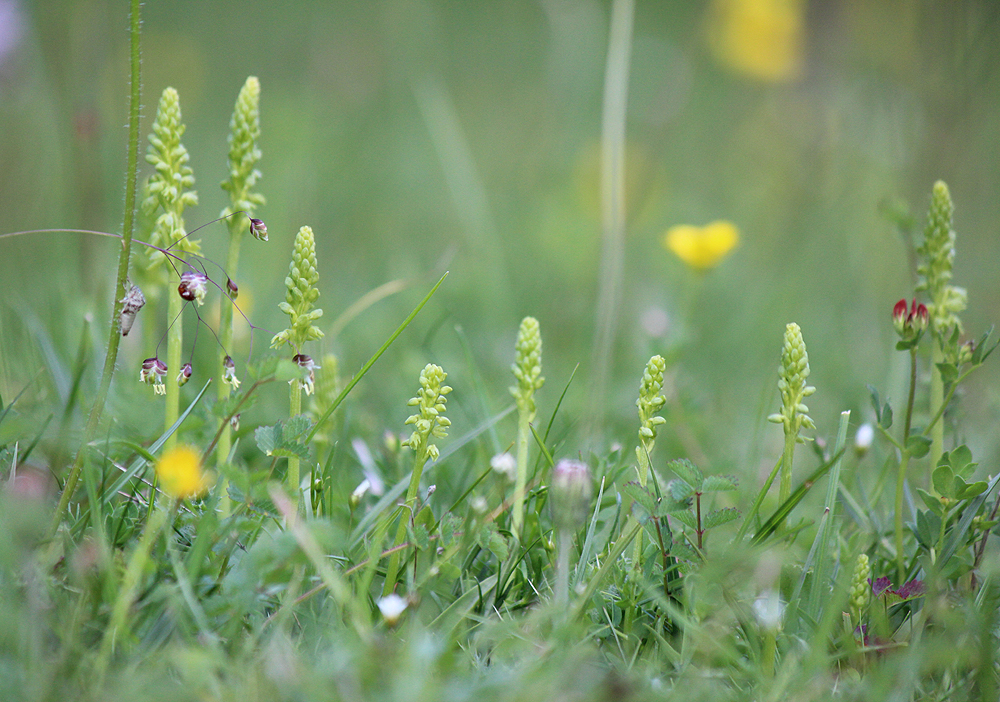
Standing just two to three inches tall, musk orchids are very difficult to spot on the close-cropped turf they favour. Well worth seeking out, from around mid-June, on the north Chilterns escarpment, musk orchids are rare locally and nationally.
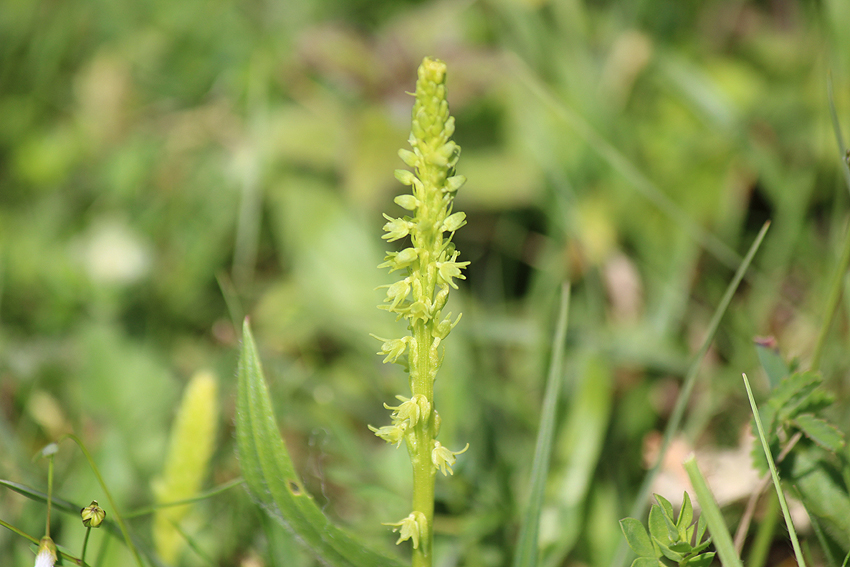
With a sweet scent of vanilla, musk orchids attract tiny insects to assist in cross pollination.
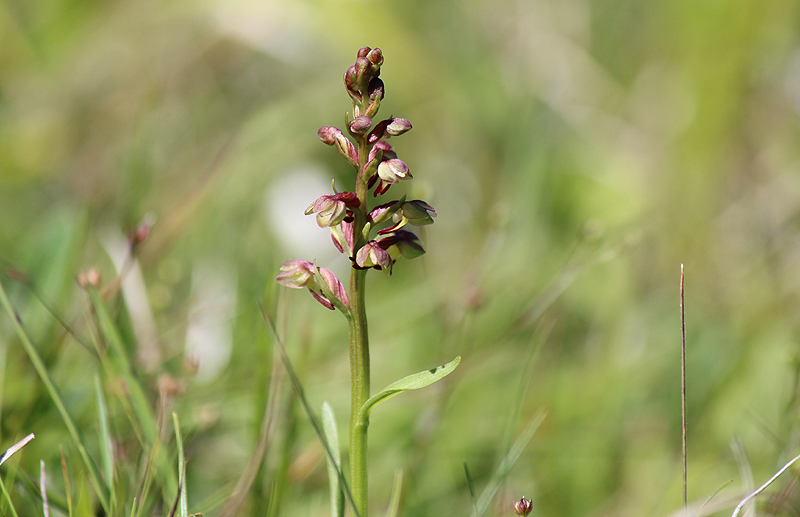
Varying from green to red, frog orchids can be found in July growing on thin soils amongst creeping thistles and short, rabbit-cropped turf on the north facing escarpment of the South Oxfordshire Chilterns. These little orchids, standing no taller than an index finger, are locally very uncommon and are listed as vulnerable on the IUCN Red List of threatened orchids in Great Britain.
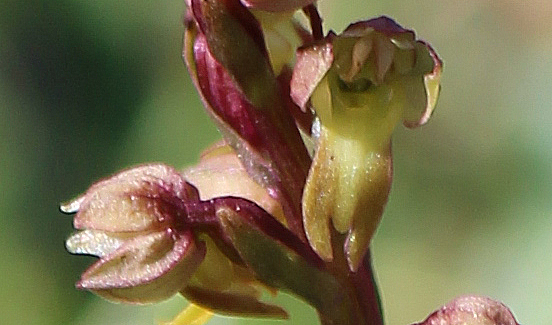
The lip of the frog orchid flower resembles the disappearing back legs of a frog.
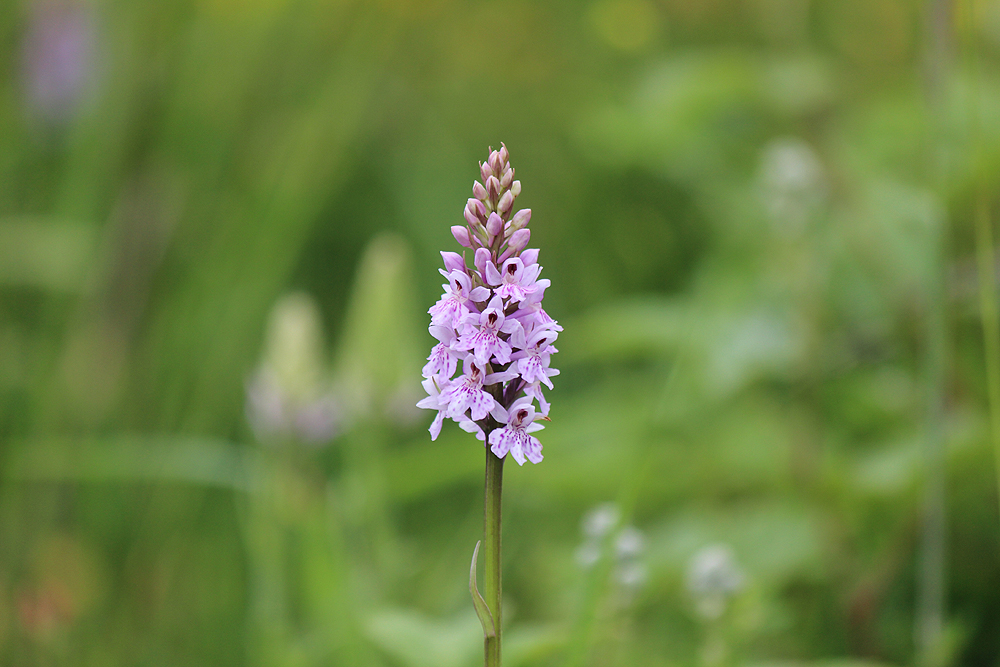
Common spotted orchids are widespread in the Chilterns, especially on the tops of the chalk downs and scarp slopes. They vary in colouration quite a bit, completely white ones being not that unusual.

The pyramidal orchid, one of the last to flower, comes into flower from mid June. Not an unusual site on roundabouts and verges, the pyramidal also likes field margins.

The white helleborine, a member of the orchid family with beautiful, pure white flowers, is comparatively easy to find from May onwards around the Chilterns. It mostly grows under or near beech trees where fungi from the tree roots help it to germinate.

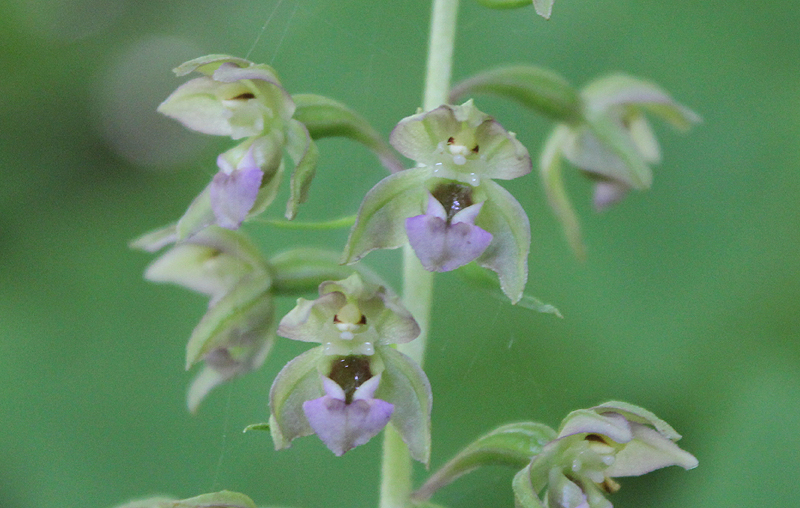
The broad leaved helleborine is found on chalky soils in shady woodland or edge of woodland sites from July through to August. More widespread than some other varieties of helleborine, as its name suggests the broad leaved helleborine can be identified by its broad, light green leaves.

Most orchids prefer open meadows. But the very uncommon violet helleborine is unlike most orchids. Violet helleborines prefer the deep shade and damp soils found under ancient beech trees. Flowering from late July into August, the violet helleborine produces a single spike of greenish pink flowers which develop into multiple flower spikes in established plants.

The leaves of the violet helleborine are smaller, darker and with a mauve underside as compared to the broad leaved helleborine, and the flowers have a whiter, less pink appearance.
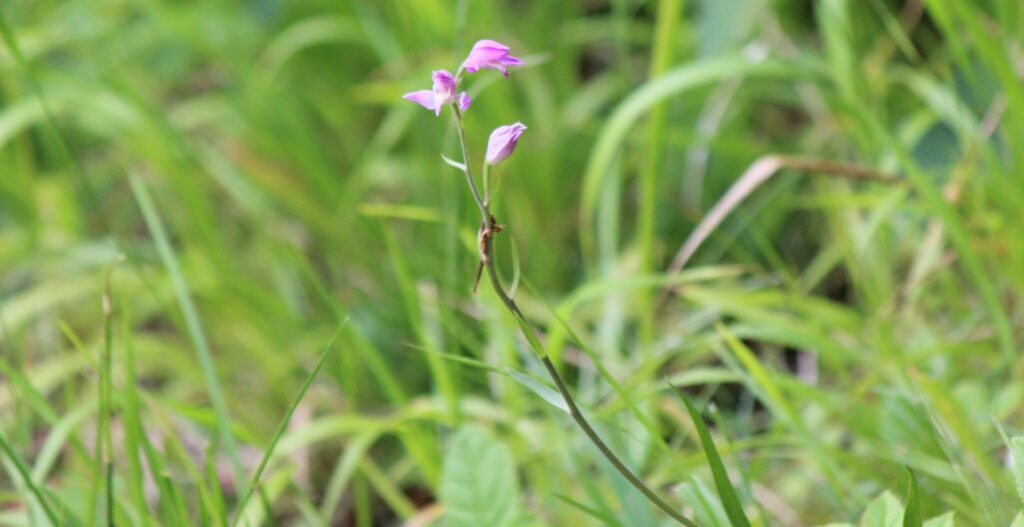
The red helleborine can be found in only three sites in the UK, one of which is in the Chilterns, high up on the escarpment where the steep slopes have largely escaped mechanised clearfelling. Its a very slender plant with leaves that resemble grasses so may well have been overlooked elsewhere.
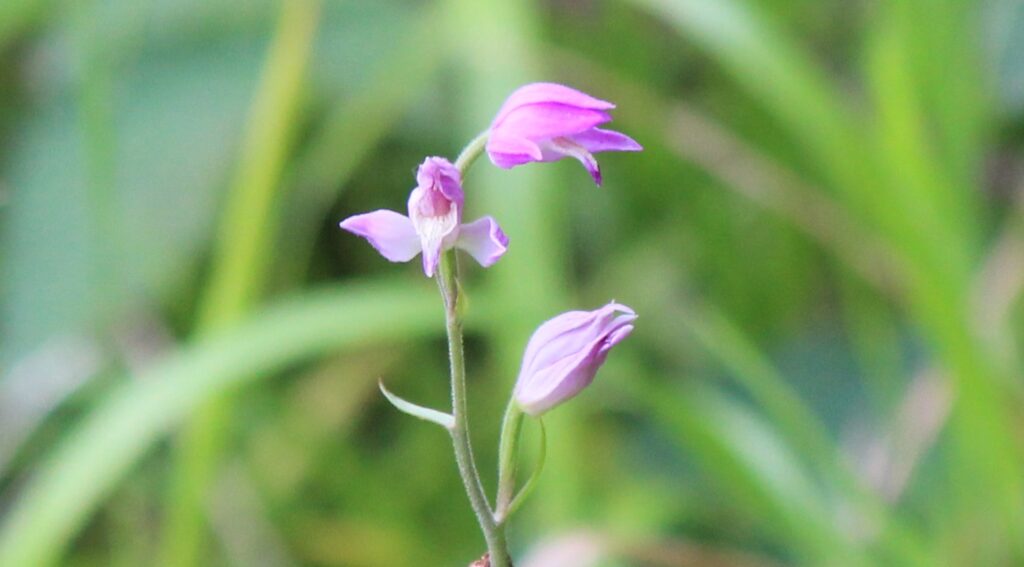
The flower of the red helleborine is a delicate mix of pink and white which stands out clearly in the beechwood clearing it favours in the Chilterns.
If you want to share one or two of the pictures here, be sure to leave a link back to this page. It’s not easy to find some of these orchids, and harder still to photograph them at exactly the right time.